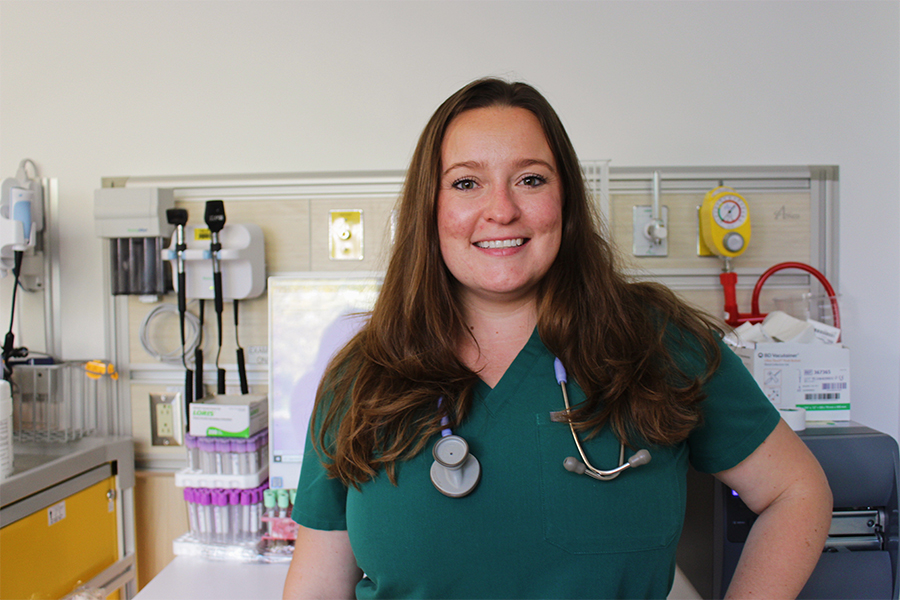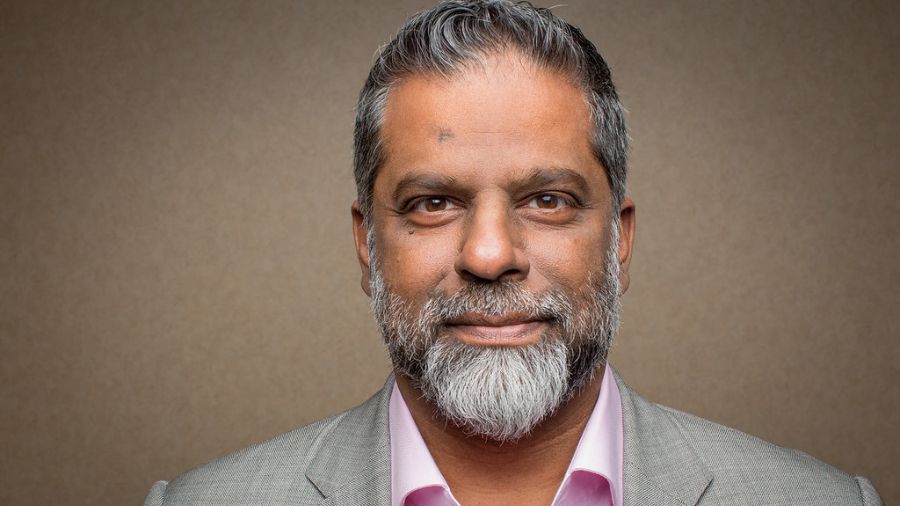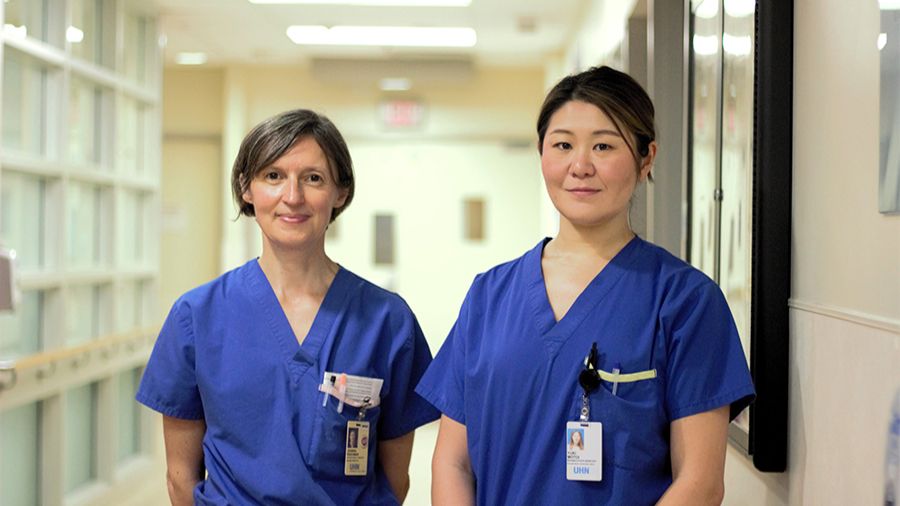By Dr. Brad Wouters
The worldwide crisis triggered by the COVID-19 pandemic has placed medical research, and the scientists who carry out this research, front and centre in the public eye. This is unprecedented and has created a once-in-a-generation opportunity. That opportunity is to use this attention as a springboard to develop a stronger connection between science and society so that it will stay front and centre.
But my fear is when the pandemic subsides, we will be pushed back into our scientific bubble.
For the sake of A healthier world, we cannot allow that to happen.
When I entered the field of cancer research 20-plus years ago, I was welcomed into a small, like-minded community that extended around the world. All of us driven by a fundamental curiosity to understand how nature and biology works, and then take that knowledge to generate theories, test and experiment – with the aim of making discoveries that impact patient lives. I still passionately embrace that drive today.
‘My fear is when the pandemic subsides, we will be pushed back into our scientific bubble. For the sake of A healthier world, we cannot allow that to happen.’
– Dr. Brad Wouters
But until the pandemic, I admit to a sense of disconnect between the science community and the general community. My neighbors knew I worked in research but they had no real concept of what I do or what drives me to do it. Small wonder. My lab investigates the cancer tumour microenvironment with primary interest in understanding the cellular and molecular responses to deficiencies in oxygenation and their influence on the biological behavior of tumours. My challenge at dinner parties with friends is translating “medicalese” into easily understood language. It’s a work in progress. One of the biggest challenges is to convey the beauty in discovery and understanding that fuels the passion of scientists without resorting to hyperbole and exaggeration on the impacts of those discoveries on disease today.
There’s a passage in a 2015 essay in The Atlantic magazine about academics and their disconnect with the general public, which can easily be applied to scientists and medical researchers. “It would make academics better researchers and better writers… if they had to translate their thinking into plain language. It would probably also mean more people, including colleagues, would read their work…” (The last sentence in italics is mine.)
This disconnect hit home for me shortly after the pandemic was declared on March 11, 2020. Days later, most of our UHN Research projects had to be shut down – the exceptions being those where patients were in clinical trials as part of their care. Many of the projects that had to be stopped were months, even years in the making. For some, it was a life’s work. Heartbreaking. And that’s not all. As a consequence of stopping research, much of the funding that supports it – and the scientists who carry it out – started drying up. That meant we were on the clock to find bridge financing. We had to find a way to hold on to thousands of talented UHN scientists and researchers now out of work.
‘There’s no question our scientific community needs to do a better job of explaining how integrated we are in daily life.’
– Dr. Brad Wouters
But when the Federal Government first came out with the emergency wage subsidies, none of our people were eligible. I, along with research colleagues and UHN leaders, launched an advocacy and information campaign with federal bureaucrats and politicians across several departments. Why? Because many people did not realize that virtually all of the funding for research comes from external sources tied to specific research projects. We have no “base funding.” We have no source to lean on to get us through the pandemic from the provincial Ministry of Health, nor the hospital. All of the research we do is tied to specific projects and grants that are funded by federal and provincial granting agencies, health charities, industry, and by UHN’s amazing Foundations – The Princess Margaret Cancer Foundation, Toronto Rehab Foundation, and the Toronto General & Western Hospital Foundation. Every year, we go out and seek new funding to pay for our research infrastructure, our amazing scientists, and the work they do. At UHN last year, we had more than 700 different groups funding research projects.
That is the precarious funding model for those of us who pursue medical discovery in Canada.
Once this financing patchwork was understood, along with the risk of losing scientists whose work was shuttered, there was a genuine effort to rectify the oversight, and by mid-May we saw a commitment of $450 million in wage subsidies to the Canadian medical research and scientific community. Our Federal Government, to its credit, realized it was important to do that not only to protect those talent-rich jobs, but to ensure the health of our hospital-based research sector in Canada. That is the underpinning of the ability to generate innovations, better treatments, and cures that improve the lives of all Canadians.
I could not be more proud of the fact that the success of COVID vaccines comes from previous investments in basic science. Researchers driven by curiosity. Undaunted by failure. Decades in the works. I am equally proud of the hundreds of UHN researchers who quickly pivoted from the disappointment of their projects being shut down to generating world-leading research to improve COVID-19 treatments. For example, Dr. Jordan Feld and his team recently published findings that an injection of Interferon early on in patients with mild COVID reduces the severity of symptoms and length of illness.
Today, public interest in science and how research works has never been higher. For my first 18 years after joining UHN in 2001, I didn’t really know any news reporters. Contrast that with the past year. I’ve now got 15 journalists on speed dial. I am constantly texting answers to their questions about vaccines, immunology, messenger RNA, and how a mutation in the spike protein increases its ability to enter into cells.
‘Many people did not realize that virtually all of the funding for research comes from external sources tied to specific research projects. We have no ‘base funding.’
– Dr. Brad Wouters
But I fear that once the crisis of COVID fades, the public will forget us and we’ll retreat into our scientific bubble. We cannot let that happen. We scientists have to do a better job of communicating beyond our bubble, of sharing the excitement and impact of what we do and how we work. Because the support for science and the important work that we do ultimately comes from the public.
It’s the general public that provides the impetus for funding. It’s their tax dollars that go to the agencies whose grants we seek. And it’s the general public that elects the politicians who set spending priorities. Politicians respond to what gets them votes. We need to continue demonstrating our value to the general public, show that we are vital to the health of Canadians, so that when we elect politicians they get the message medical research is a priority.
There’s no question our scientific community needs to do a better job of explaining how integrated we are in daily life. How we contribute to public health policy. How our discoveries help innovate the delivery and costs of healthcare. How we help governments drive the economy with high-end jobs. To do this, we have to come out of our Ivory Towers. We have to speak plainly so we are understood, and share the true motivation that drives each of us. We have seen there is an eagerness in the community when they can connect science to their own lives.
I’ve heard it said that the practice of Medicine is a form of social activism, predicated on giving back and taking care of people. The general public knows the integral role of healthcare workers in this aspirational pursuit. Let’s now work to expand the public’s understanding to include the fact researchers and scientists are also intertwined and equal partners in the practice of Medicine.
Dr. Brad Wouters is UHN’s Executive Vice President, Science and Research, and a Senior Scientist at the Princess Margaret Cancer Centre.



